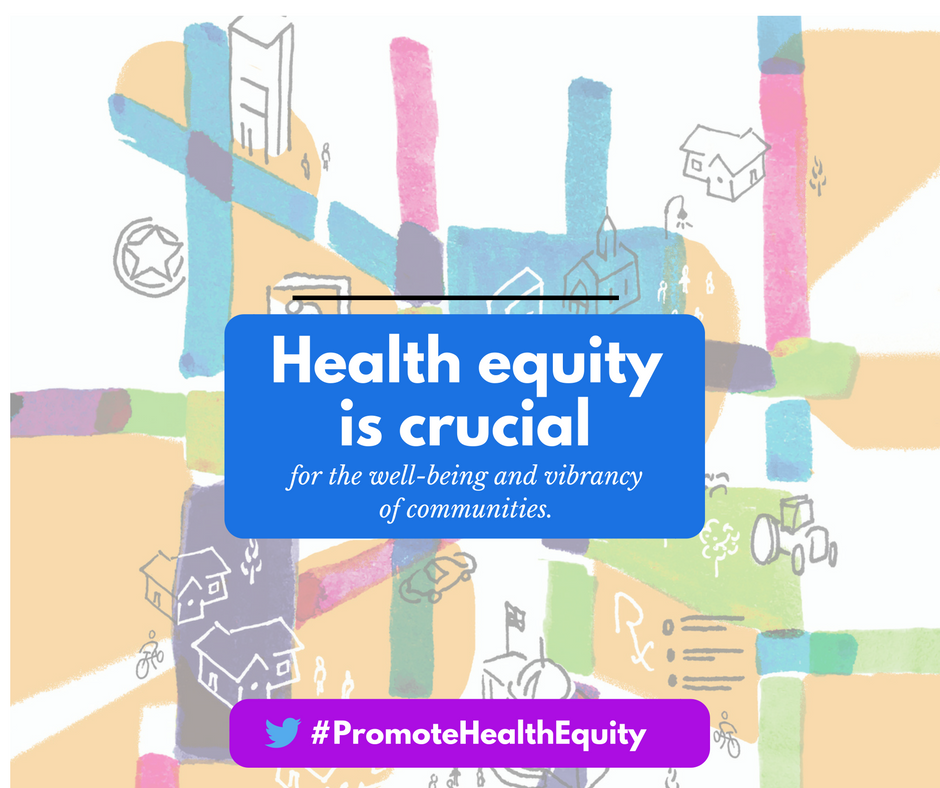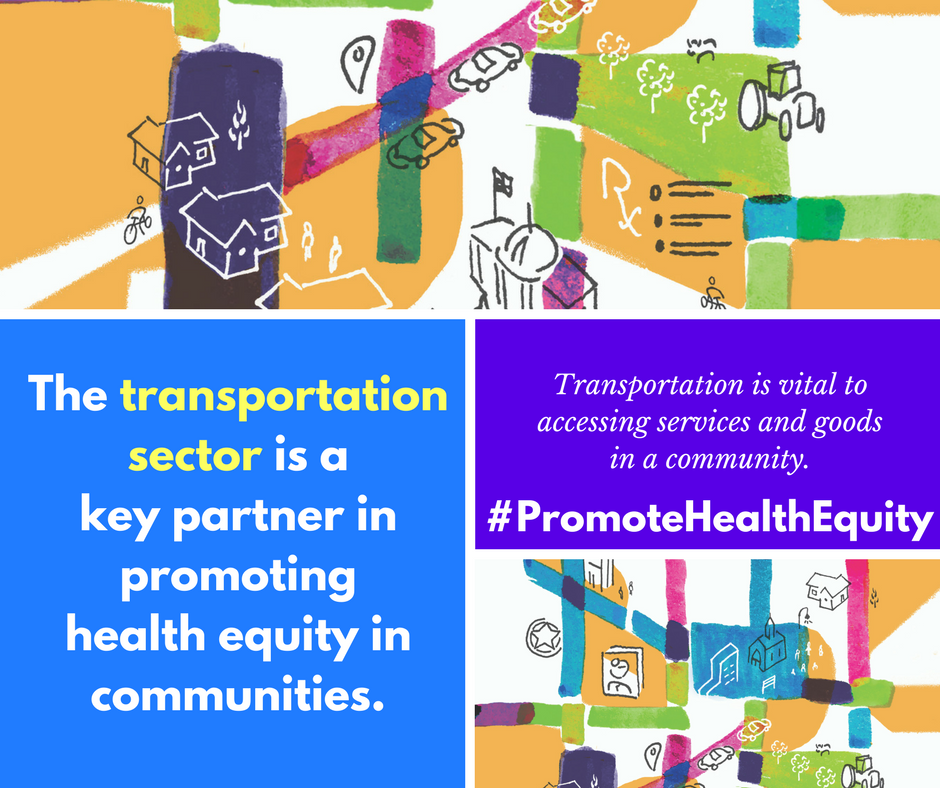

Inequities in health stem from structural inequities—the systemic disadvantage of one social group compared to other groups—deeply embedded in the fabric of society and encompassing policy, law, governance, and culture. Health inequities in large part result from historic and ongoing poverty, structural racism, and discrimination, and they can be mitigated by policies and community action in powerful ways.
Community-wide problems such as poverty, unemployment, low educational attainment, lack of public transportation, inadequate housing, and exposure to violence all shape health and contribute to health inequities. How people get around their communities can affect health and well-being, in addition to access to important opportunities and services. To address the underlying conditions and root causes of health inequities, new partners in transportation and other sectors are joining forces with community members to promote health equity.
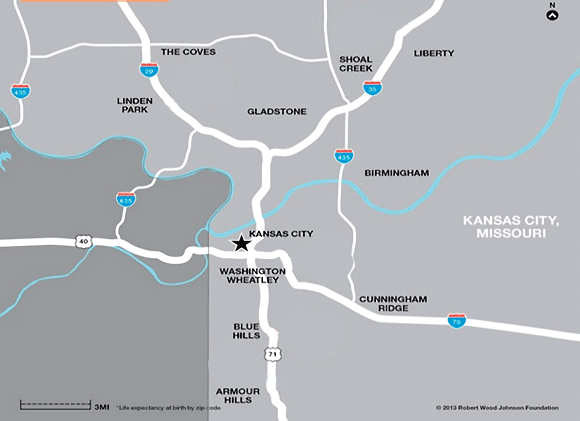
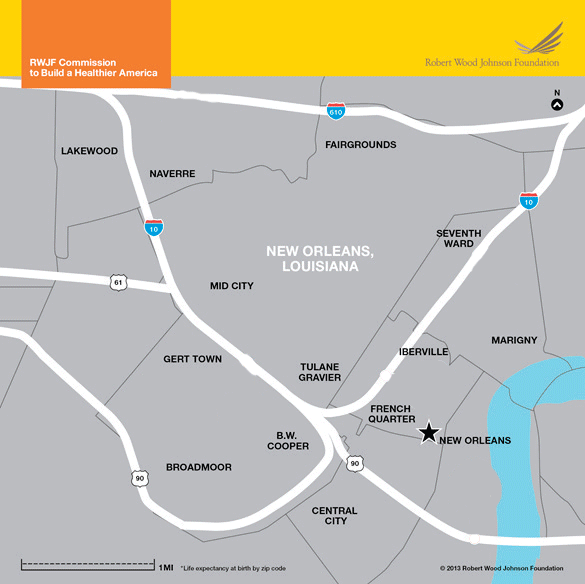
For example:
Disparities like these stem from systems and structures that make it a lot harder for poor people to live healthy lives. Health inequities are a problem for us all, adversely affecting our nation’s children, our business efficiency and competitiveness, our economic strength and national security, and our standing in the world.
Communities are able to take action on the factors that shape health, but they can’t do it alone. Community-based solutions rely on multi-sectoral collaborations ensuring varied approaches to improving community health equity and well-being. A report from the National Academies of Sciences, Engineering, and Medicine offers promising approaches for promotion of health equity. What is the role of the transportation sector?
Transportation is the networks, services, and infrastructure necessary to provide community residents with the means to get from one place to another. It is vital to accessing goods, services (including health and social services), social networks, housing, education, employment, and more. If designed and maintained properly, transportation facilitates safe and efficient mobility and is accessible to all residents, regardless of geographic location, age, or disability status. And yet:
Community-driven solutions can take into account the range of factors that contribute to health inequity in the United States, such as income and wealth or employment. These factors are the social determinants of health. The IndyCan example below works in the areas of employment, public safety, transportation, education, and social environment.
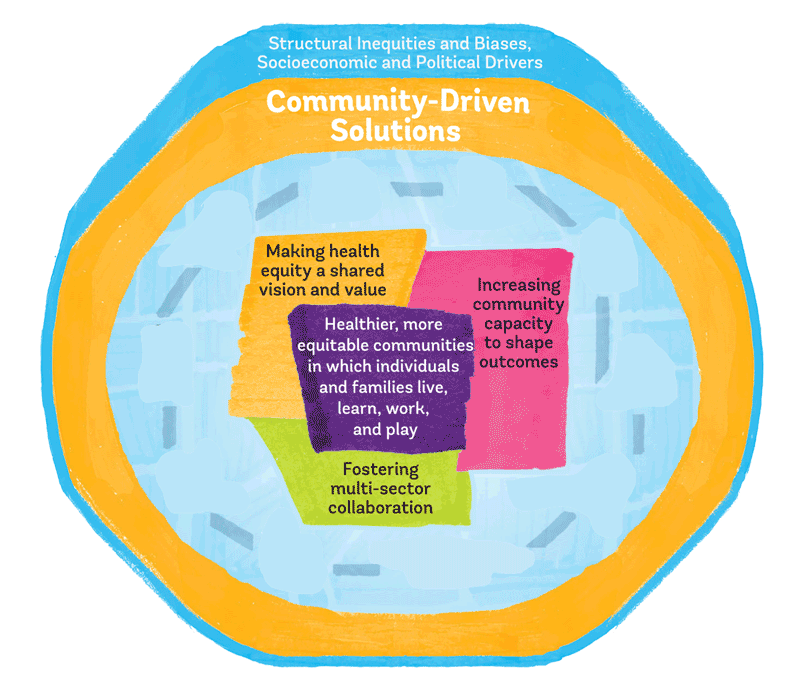
IndyCAN is a multiracial, nonpartisan organization in central Indiana that catalyzes marginalized people and faith communities to act collectively for racial and economic equity. One of its programs, the Ticket to Opportunity initiative, works to mitigate the effects of inadequate transit as a barrier to employment opportunities.
The initiative organized to pass a regional transit expansion referendum to triple bus service in Indianapolis. Key partners included faith-based organizations, businesses, government, and community leaders. Ticket to Opportunity created dialogue with 80,000 marginalized voters of color through large-scale integrated voter engagement to build sustained capacity for achieving transit equity, including an expanded bus service that would fuel economic development and increase job access threefold for low-income communities.
These and other efforts highlight how multiple sectors can successfully work together to address multiple determinants of health through community-driven work.
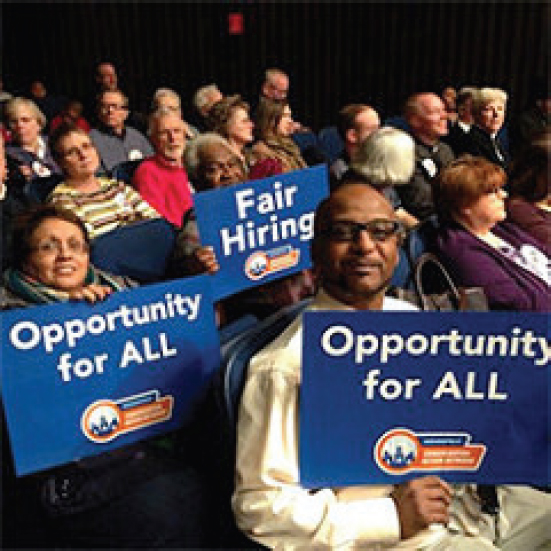
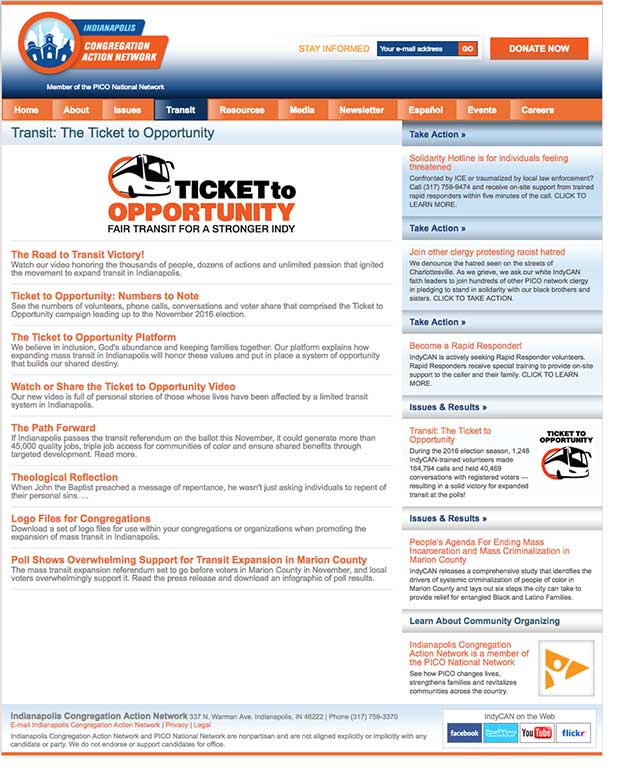
The Nashville Metropolitan Planning Organization (MPO) is a local planning agency for seven counties in Tennessee that also functions as a convener for local communities and state leaders to collaborate on strategic planning for the region’s multi-modal transportation system.
The mission of the organization is to “develop policies and programs that direct public funds to transportation projects that increase access to opportunity and prosperity, while promoting the health and wellness of Middle Tennesseans and the environment.”
The Nashville MPO developed a regional transportation plan in 2015 to help communities grow in a healthy and sustainable way by:
The criteria by which the Nashville MPO plans to evaluate its projects include indicators related to health, such as physical activity, air quality, and traffic collisions.
Multiple national initiatives in the past 20 or 30 years have aimed to improve livability and sustainability in places across the United States, and transportation equity is a mainstay of much of this work. For instance, the U.S. Department of Transportation (DOT), with the U.S. Department of Housing and Urban Development and the U.S. Environmental Protection Agency, launched the federal Sustainable Communities Partnership in 2009. This initiative works to help U.S. communities “improve access to affordable housing, increase transportation options, and lower transportation costs while protecting the environment.”
Supportive policies, like funding initiatives, can support community action. For instance, the DOT’s Transportation Investment Generating Economic Recovery (TIGER) discretionary grants program is helping jurisdictions such as Pittsburgh build infrastructure that will “reconnect the Hill District to downtown Pittsburgh, more than 60 years after highway and arena construction razed a middle income African American community” through a project to improve neighborhood streets, sidewalks, and crosswalks; add a bus stop, bike-sharing station, and Americans with Disabilities Act–compliant walkways; and create open space for transportation and recreation.
Government agencies that support or conduct planning related to transportation can:
Safe Routes to School, an example of active transportation targeted at the local level, aims to improve children’s safety while walking and riding bicycles.
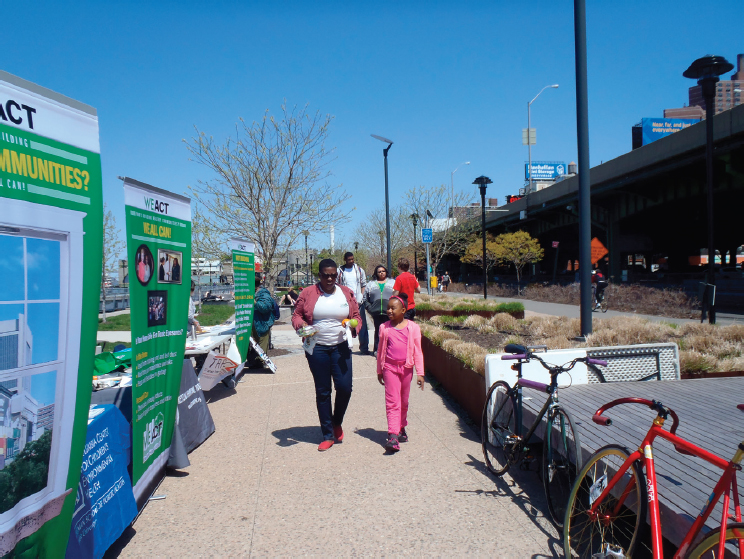
Promoting means of active transportation—like walking, cycling, and access to public transportation—helps reduce environmental barriers to physical activity and can improve health outcomes.
The transportation sector is a key partner in promoting health equity in communities. Working to tackle unemployment, concentrated poverty, and school dropout rates can seem overwhelming to communities, but when actors in the community—residents, businesses, state and local government, and other local institutions—work together across multiple sectors, communities gain the power to change the narrative and promote health equity through long-lasting, community-driven interventions.

Copyright 2017 by the National Academy of Sciences. All rights reserved


